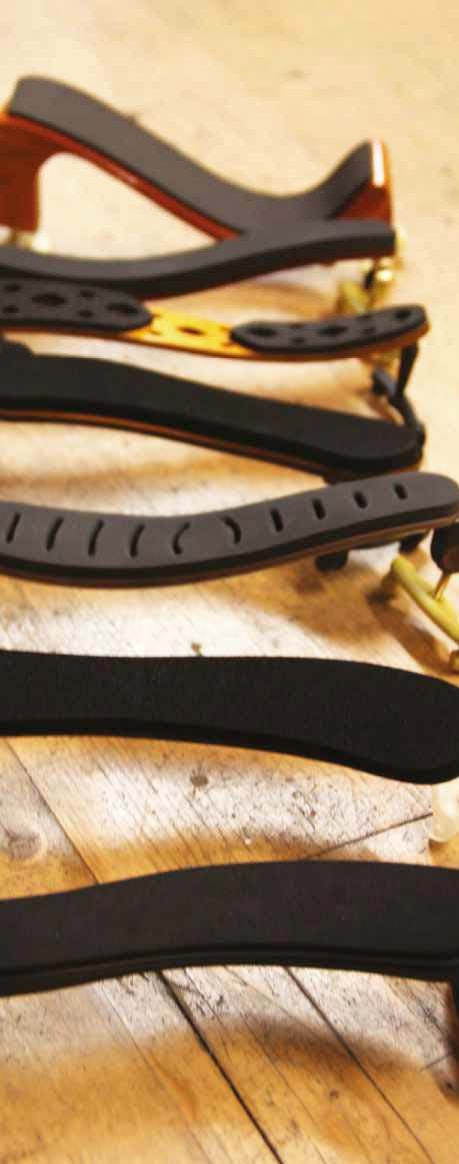
PAULINE HARDING
For violin and viola players, choosing a suitable shoulder rest is an important and sometimes complicated process, which must allow equally for the individual’s physical build, and their concept of security and comfort. Player preferences can range from intricately personalised and exacting set-ups to using no shoulder rest at all – which makes reviewing different models currently on the market an especially fraught and subjective process.
Bearing this in mind, we brought together four very different players – each with their own shoulder rest preferences – to test rests from five companies. Our contributing editor Pauline Harding and I tested the violin rests, while professional freelance musicians Edmund Riddle and Kathi Von Colson took on the viola rests. Pauline uses a Kun Coussin Pliant rest with her Jürgen Manthey violin of 2004, whereas I use only a small foam pad by Huber – often given to children before they graduate to a ‘proper’ rest, but which has always provided just that little bit of cushioning I require to support my 1770 Chappuy violin. Edmund uses a Viva La Musica Professional rest with his 2011 Stefan Hansen viola, and has spent some time modifying the rest to meet his requirements. Kathi uses a Bonmusica rest with her anonymous Mittenwald-made viola.